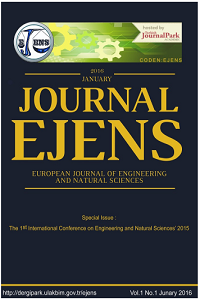Process Design for the Recycling Of Tetra Pak Components
Process Design for the Recycling Of Tetra Pak Components
tetra pak, recycle process design,
___
- [1]. Abreu M., Recycling Tha Fibres On Tetra Pak Cartons. Tetra Pak Canada Inc. 2000.
- [2]. Pietikäinen, V., Collection and recycling of beverage cartons at AIT. Project report. 2008.
- [3]. Ayrılmış, N., Candan, Z., Hızıroğlu, S. “Physical And Mechanical Properties Od Cardboard Panels Made From Used Beverage Carton With Veneer”, Materials & Design, 29, 1897-1903. 2008
- [4]. Ayrılmış, N., Kaymakçı, A., Akbulut, T., Elmas, G. M. “Mechanical Performance Of Composites Based On Wastes Of Polyethylene Aluminum And Lignocellulosics” Composites: Part B, 47, 150-154.
- [5]. Tetra Pak Global Site. “Recycling And Recovery”. [Online]. Available:
- http://www.tetrapak.com/environment/recycling-and-recovery/aluminium-and-polyethylene,
- [6]. Korkmaz, A., Yanık, J., Brebu, M., Vasile, C. “Pyrolysis Of The Tetra Pak”, Waste Management, 29, 2836-2841. 2009.
- Başlangıç: 2015
- Yayıncı: CNR Çevre
Prediction of Dam Reservoir Volume Fluctuations Using Adaptive Neuro Fuzzy Approach
Chemically Color Removal from Textile Wastewater with Oxidizing and Reducing Agents
Mustafa KARABOYACI, Mesut UYSAL, Aziz ŞENCAN, Mehmet KILIÇ
Enhancing Heat Transfer from a Porous Plate with Transpiration Cooling
Tribological Properties of Boron Carbide Reinforced Copper Based Composites
Investigation and Evaluation of Degradability of Ibuprofen from Wastewater by Using Fenton Process
